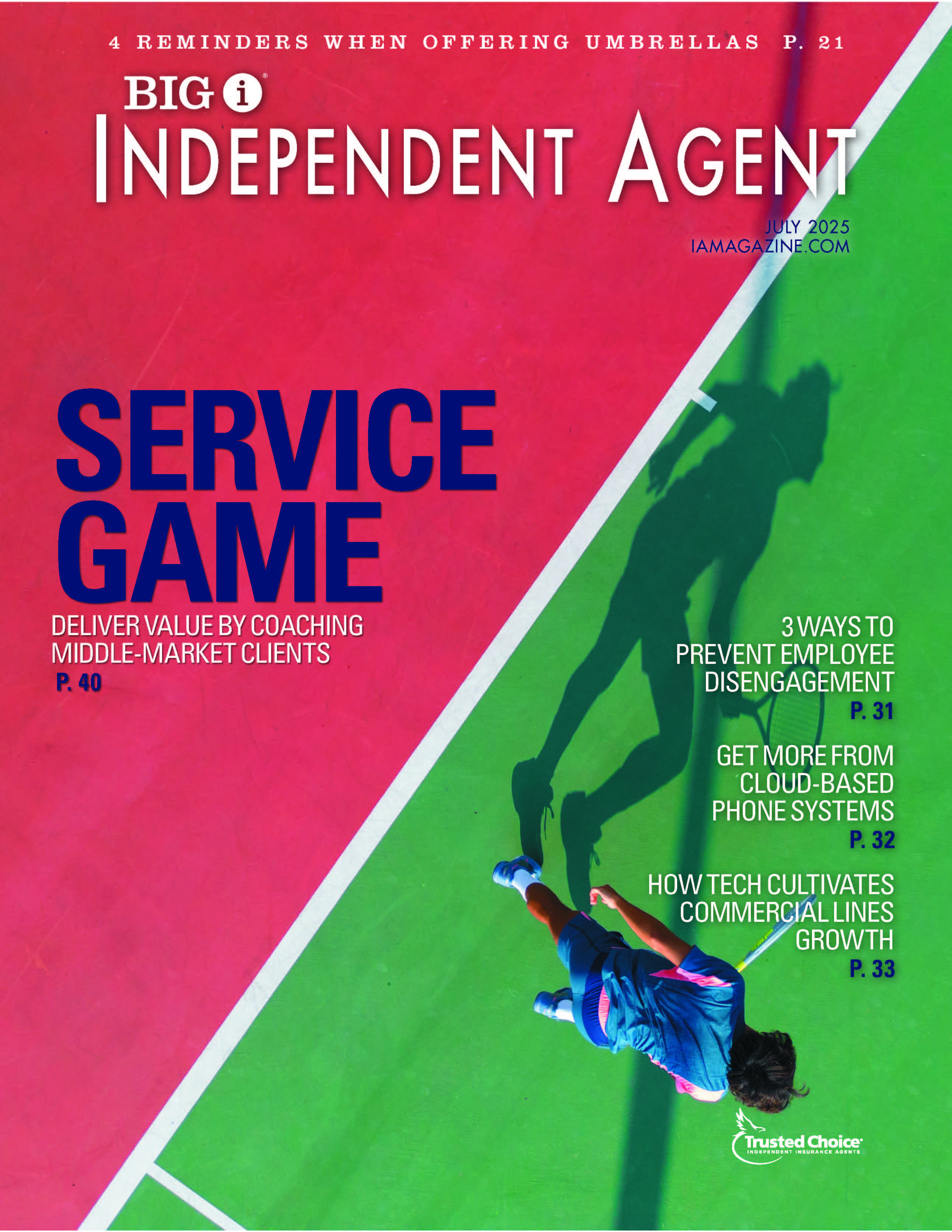Build Trust with Clients Through a Smooth Claims Experience

By: Sarah Schmitz
Developing and maintaining strong relationships with clients is a vital business strategy that, in most industries, can make or break a business. This is especially true for insurance agents who have public sector or commercial clients, and must step in to assist during what is a stressful and distressing time: filing an insurance claim and facing possible disruption of their business, time and resources.
When an insured must file a claim, they often count on their agent or broker to manage the situation. Even one hiccup in the process can sometimes lead to a bumpy settlement and affect the relationship you’ve worked so hard to build.
Agents and brokers can get a head start on the claims process by anticipating the type of information the carrier will need. Ideally, most claims processes start long before a submission is ever made.
Follow these steps to ensure your client relationships don’t break down in a time of crisis.
Submit Right Away
Time is of the essence—submit claims as soon as possible. This is especially true when a lawsuit is involved. A claim in suit needs to be addressed immediately and a delay can create big headaches or even elicit a dismissal. It is always a good practice to stamp the date received on the documents so there is no question. Some states only provide 20 days, including weekends, to respond to a lawsuit.
Insureds and adjusters should typically receive acknowledgement of receipt of a claim, and insureds should be directly contacted within a short period of time. Monitor the process to make sure the insured speaks with an adjuster and that the adjuster is able to reach the appropriate point of contact.
Verify Contact Information
Often, when submitting a claim, an agent or broker will also attach an ACORD. These forms and any other communication from the agent or broker are a quick resource for an adjuster and help them contact the appropriate person. Occasionally, the contact is different for different types of claims, such as auto property damage versus employment claims.
Work closely with your clients to ensure the correct points of contact, phone numbers and email addresses are listed. The sooner you gather all information, the sooner adjusters can reach insureds, and the faster the process will go. If an adjuster is having a difficult time reaching an insured, they will likely be calling you, resulting in delayed claim response.
Document from the Get-Go
When submitting a claim, the process will move along much faster if the following is provided:
Claim in suit: If submitting a claim in suit, always remember to send the actual lawsuit in its entirety, including all exhibits. Also, include a copy of the summons, noting the date and how the insured was served, such as via mail, process server or sheriff. If the suit involves a due date, the adjuster needs to know how much time they have to work with. Also, note which defendants, if individually named, are employees of the insured and if any of the information in the lawsuit is incorrect.
Tort notice: When submitting a tort notice, submit any documents that substantiate the claim, such as accident reports, police reports, employment records, damage summaries, demand letters, investigation reports, medical records or any documents in response to a Freedom of Information Act request.
Potential claim: Often, potential claims are submitted to adjusters to give them a heads up if they foresee a complaint being filed. When submitting a potential claim, it’s helpful to provide the adjuster with a copy of the actual complaint, if already filed, and a gauge on the seriousness of that complaint or a copy of a news article. If the adjuster needs to have it on their immediate radar, let them know.
If a potential claim goes to suit, take note of the assigned adjuster and the previously assigned claim number on the submission. Mentioning this may also be useful if there are multiple claims for one incident.
Note that tort notices and potential claims, while important, do not involve as stringent deadlines for response as lawsuits. However, these matters do require investigation.
Educate Insureds
Don’t let your clients be taken by surprise when they need to file their first claim. Providing an understanding of the process before a submission is set in motion can not only save time, but also provide a framework that may assist your clients from a risk management perspective.
For example, if an insured is unaware of the documents that may be requested during a claims investigation, they may not properly file or retain the pertinent paperwork. Depending on the type of potential claims, it may be helpful to provide a checklist of items they will need to have ready in the event of a claim.
Helping your client proactively prepare for a claim is an excellent opportunity to demonstrate and provide a very valuable service. Consider examining the notice the insured provides to place all appropriate carriers on notice, place current and subsequent carriers on notice if necessary, and warn the insured if there is a potential coverage denial or issue.
Sarah Schmitz is a claims manager at OneBeacon Government Risks at its headquarters in Minnetonka, Minnesota. She currently handles a wide range of claims brought against municipal entities, public officials and law enforcement.










